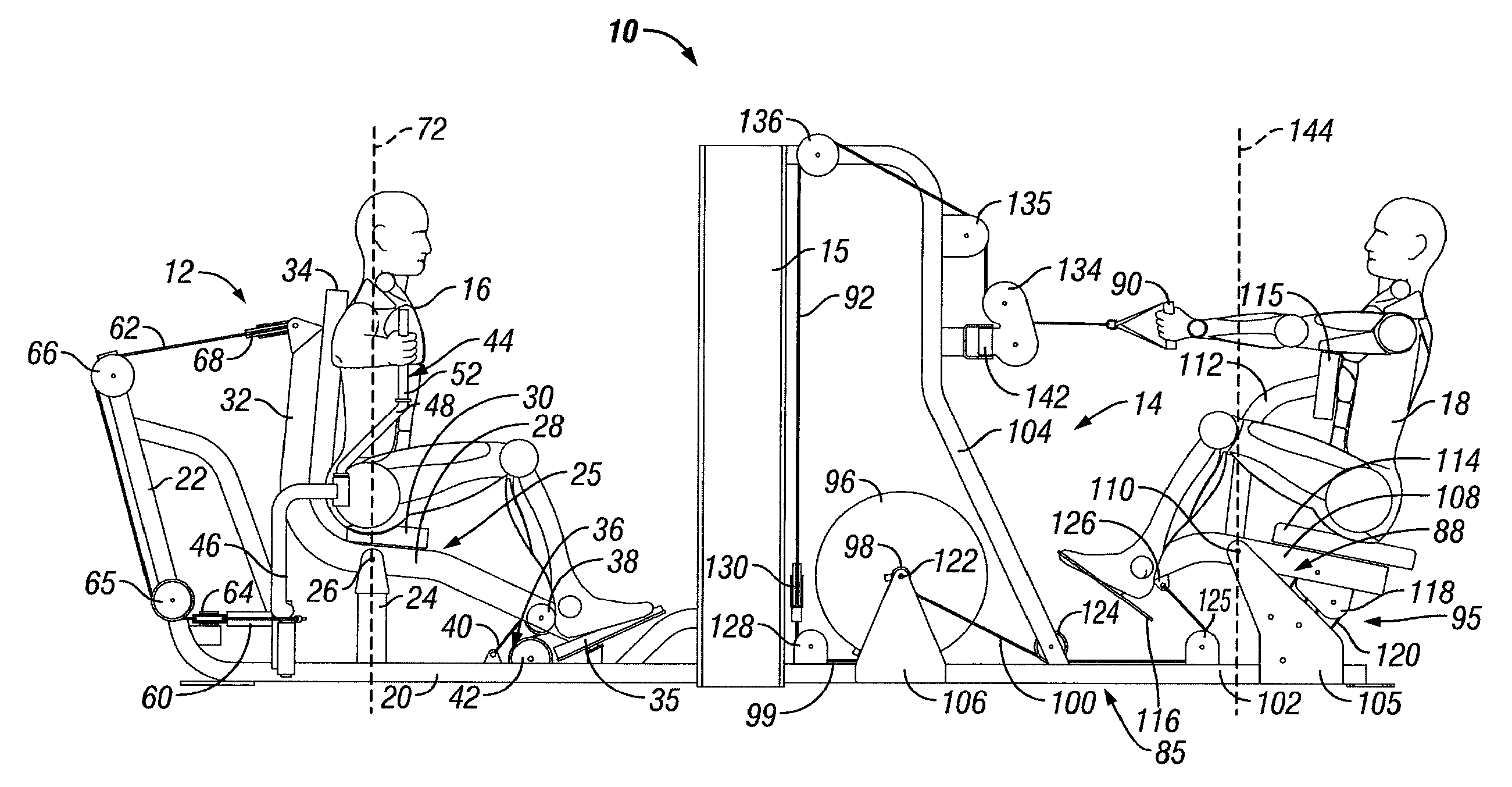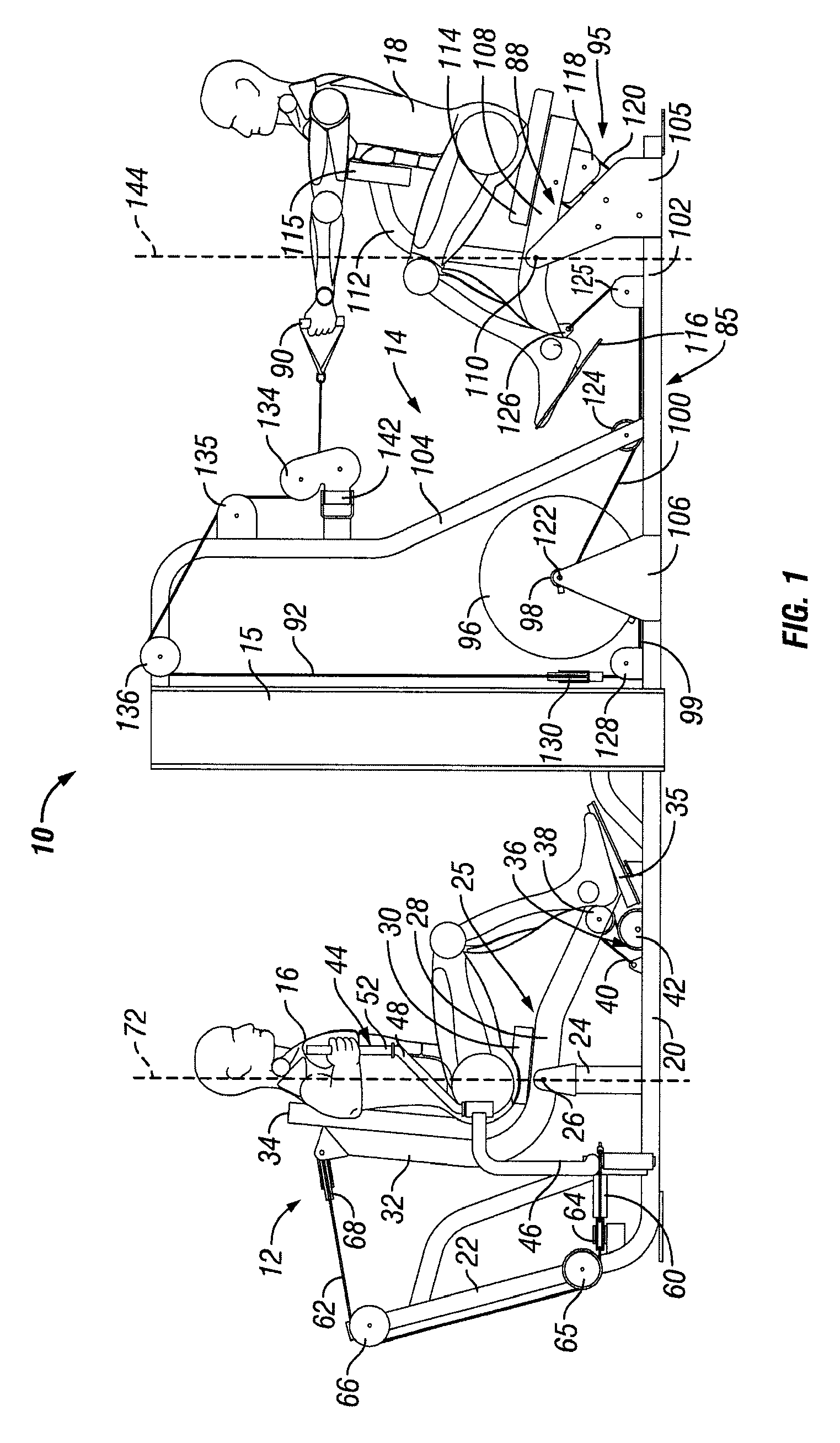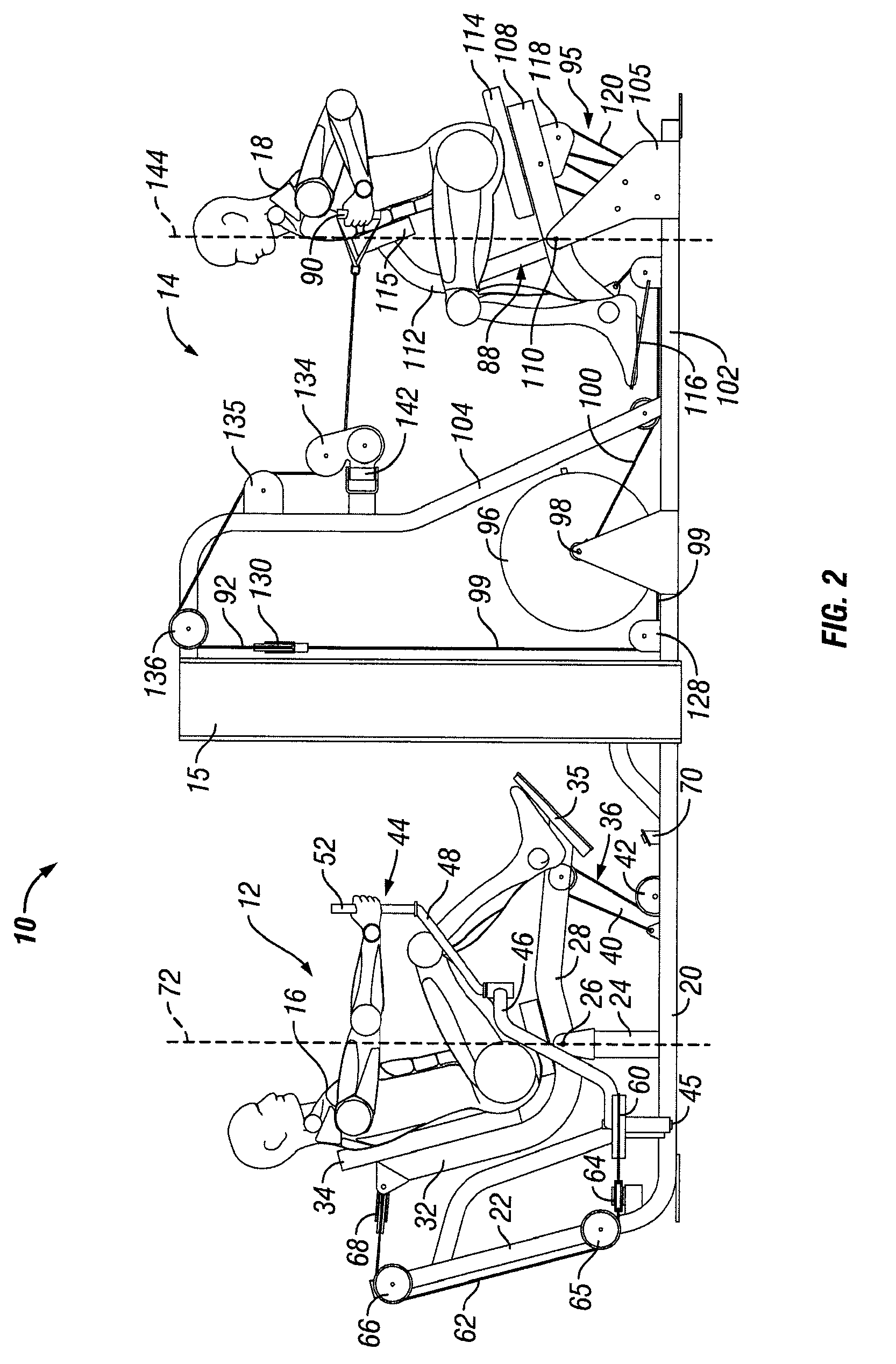Multi-station exercise machine
a multi-station, exercise machine technology, applied in the field of exercise machines, can solve the problems of increasing the stress on the joints, difficult exercise for many people, and difficulty in performing exercises, and achieve the effect of properly and safely positioning the exerciser
- Summary
- Abstract
- Description
- Claims
- Application Information
AI Technical Summary
Benefits of technology
Problems solved by technology
Method used
Image
Examples
Embodiment Construction
[0051]Certain embodiments as disclosed herein provide for a multi-station exercise machine having multiple exercise stations, at least one of which has an exercise arm or user engagement device and pivoting user support which travel in a dependent relationship.
[0052]After reading this description it will become apparent to one skilled in the art how to implement the invention in various alternative embodiments and alternative applications. However, although various embodiments of the present invention will be described herein, it is understood that these embodiments are presented by way of example only, and not limitation.
[0053]FIGS. 1 to 4 illustrate a multi-station exercise machine 10 according to one embodiment, which has a first exercise station 12 for performing pectoral (“pec”) fly exercises and a second exercise station 14 for performing rear deltoid exercises. The two stations 12, 14 share a common load or weight stack and are mounted face-to-face on different portions of a ...
PUM
 Login to View More
Login to View More Abstract
Description
Claims
Application Information
 Login to View More
Login to View More - R&D
- Intellectual Property
- Life Sciences
- Materials
- Tech Scout
- Unparalleled Data Quality
- Higher Quality Content
- 60% Fewer Hallucinations
Browse by: Latest US Patents, China's latest patents, Technical Efficacy Thesaurus, Application Domain, Technology Topic, Popular Technical Reports.
© 2025 PatSnap. All rights reserved.Legal|Privacy policy|Modern Slavery Act Transparency Statement|Sitemap|About US| Contact US: help@patsnap.com



